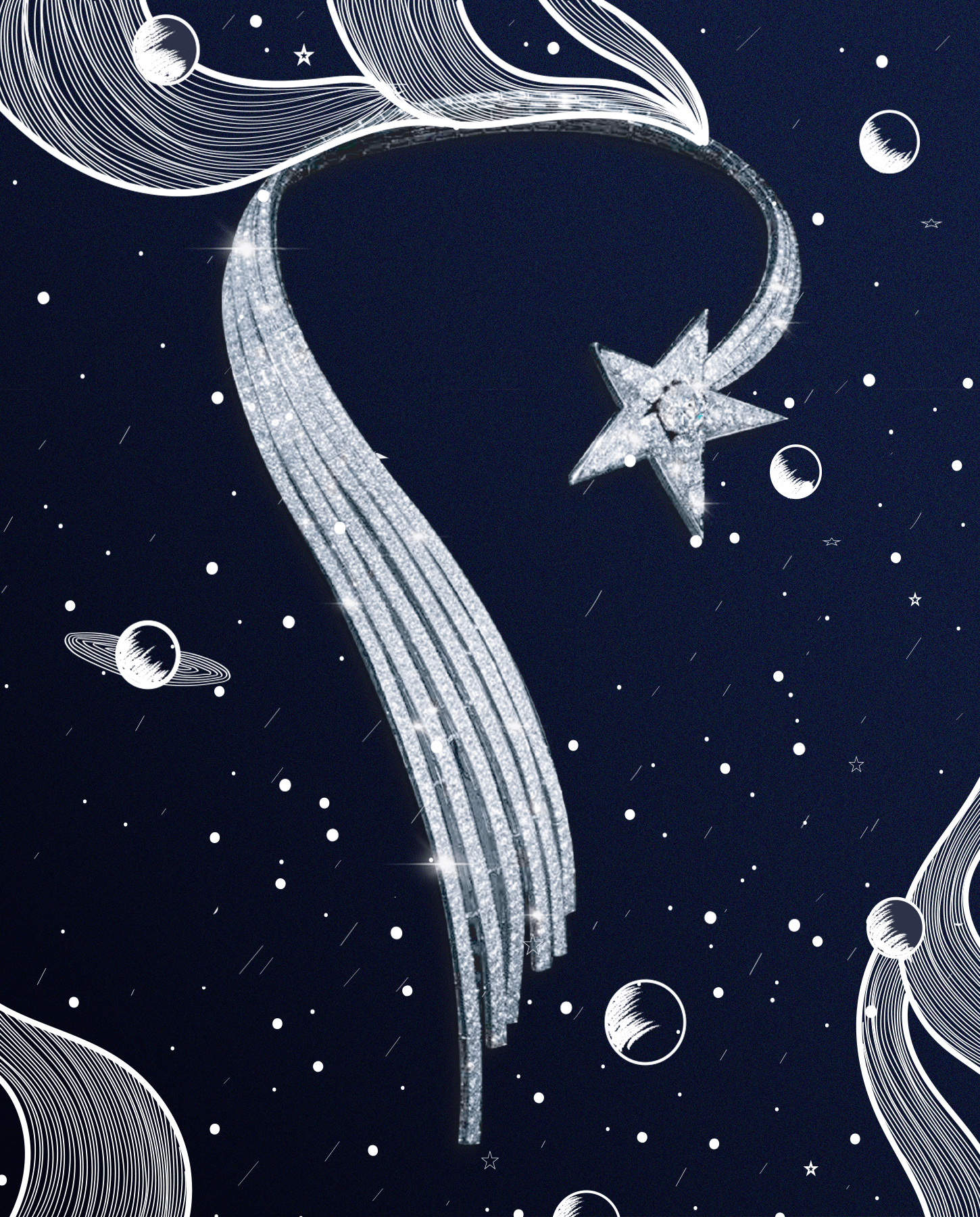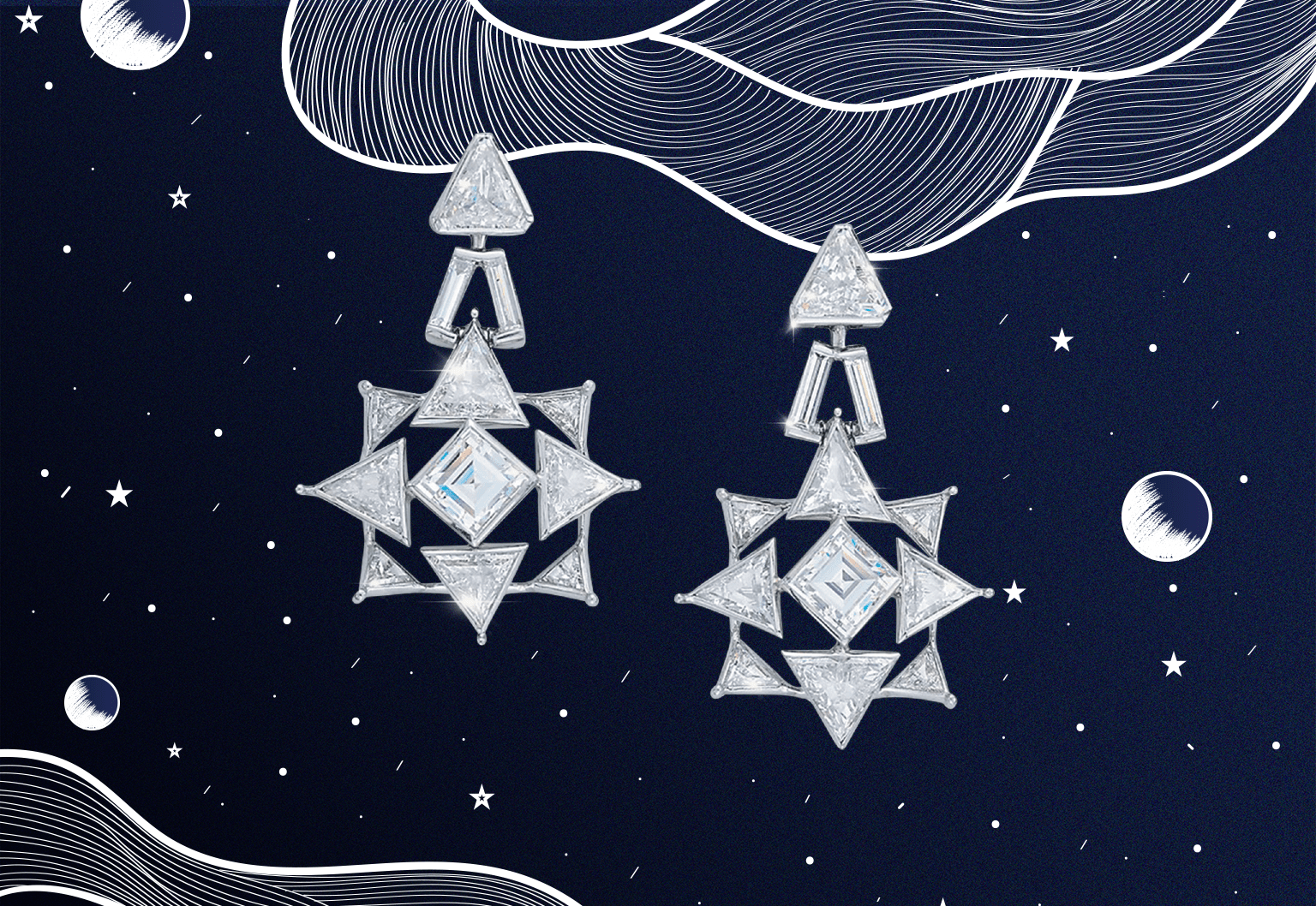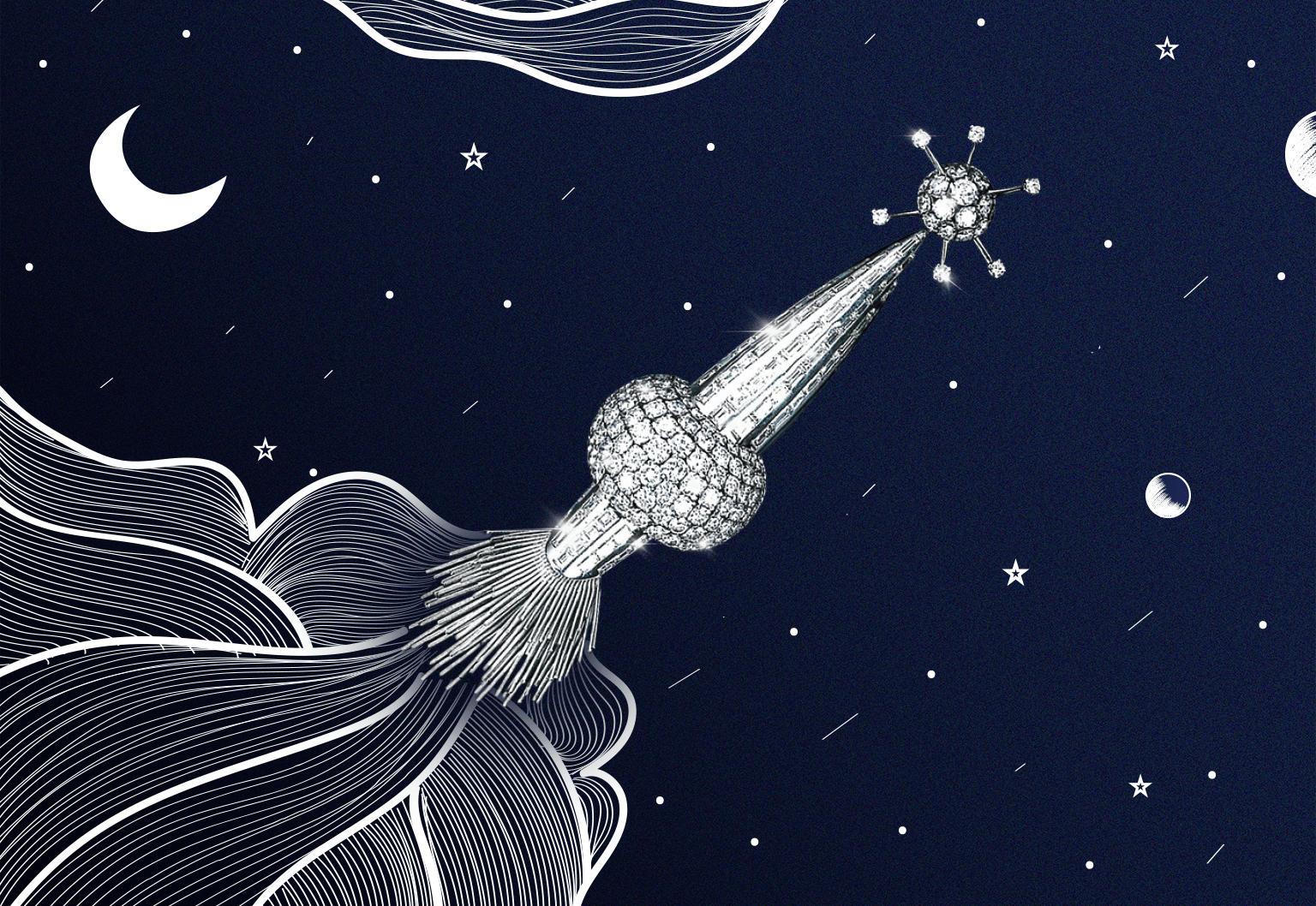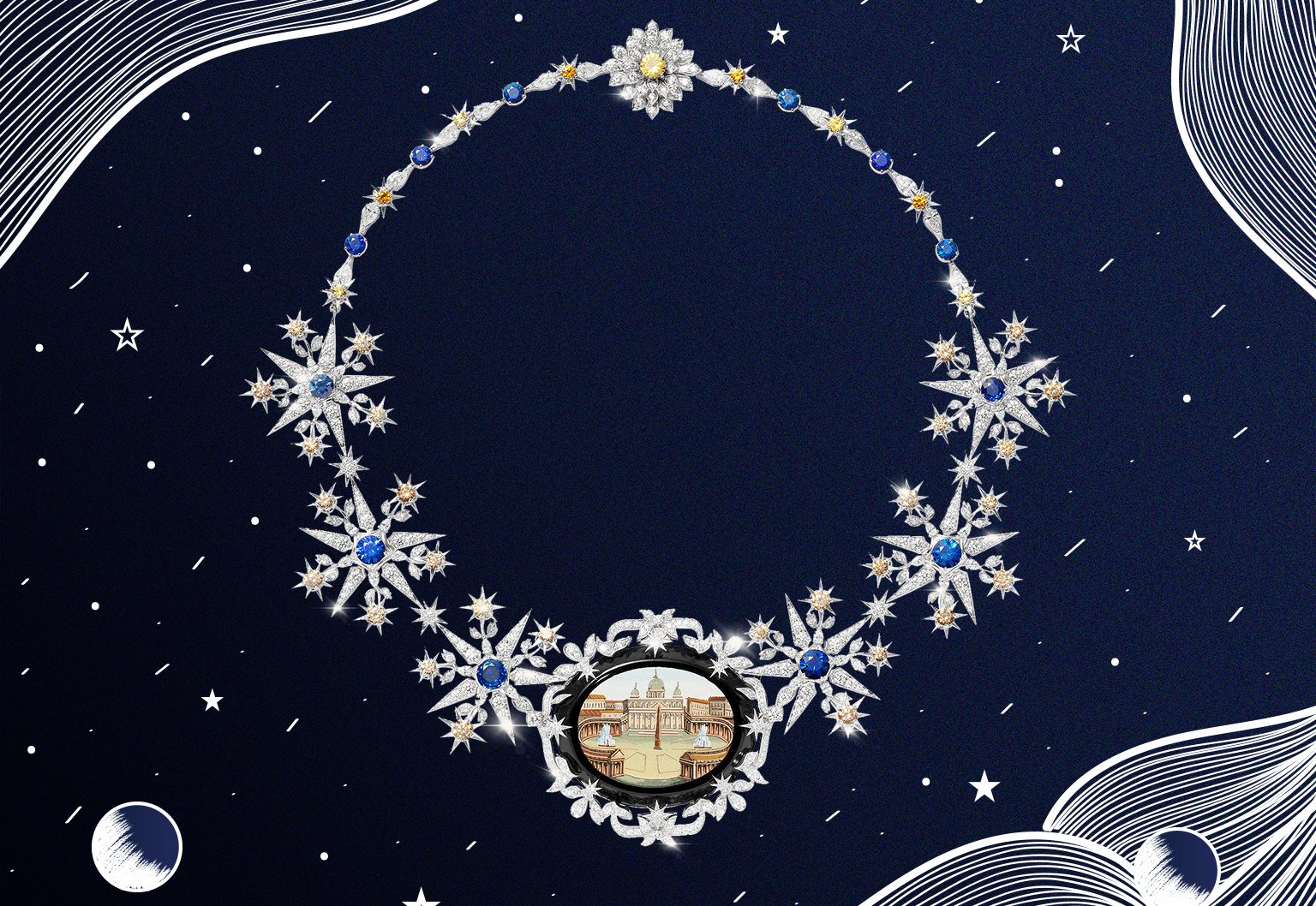Sparkling With The Cosmos – Celestial Wonders Shaping Natural Diamonds
Discover how ethereal elements from the sky – sun, moon, stars and other celestial bodies have inspired jewellery trends across the ages

The popularity of sun, moon and stars as natural diamond jewellery motifs have spanned millennia and cultures. From Mesopotamia to modern times, these motifs have symbolized gods, goddesses, and emotions in multiple forms. These shapes have multitudes of meanings; popularly, the sun symbolizes abundance, good fortune, strength, and success. The sublimity of moon charms and crescent moon jewellery indicate femininity. With its complex phases, moon motifs also signify creativity, evolution, birth cycles and motherhood. Keeping in mind cultural nuances, stars often represent many different things. For instance, the five points may correspond with the five pillars of faith or the five daily prayers for Muslims. For Christians, they indicate the virtues of a chivalrous knight: generosity, courtesy, chastity, chivalry, and purity. Later, the pentagram’s five points came to symbolize how we are connected to Mother Nature through spirit, earth, air, fire, and water.
Similarly, the eight-point star is popular in Hinduism where each point symbolizes eight kinds of wealth: victory, patience, health, knowledge, nourishment, prosperity, mobility, and riches.
An Earthly Affair: Celestial Motifs in Diamond Jewellery
The crescent moon, perhaps the most popular and oldest motif out of the three, dates back to 2nd millennium BC. Both crescent moons and stars were seen in the civilizations around the Mediterranean Sea, Central Asia, and Persia. Byzantine coins during the Greco-Roman period often featured crescent and star shapes. In Rome, crescent moon pendants were rather popular.
Coming to India, Mughal jewellery incorporated the sun, moon and stars, especially in hair ornaments. Chaand baalis, a very popular style of Mughal earrings, were long earrings with a crescent moon at the end. And I’m sure you must have noticed how popular they still are! Around the same period, Edwardians and Victorians used these very motifs to convey sentiments in an age where words could easily be censored.
Examples abound. Empress Elisabeth of Austria, also known as ‘Sisi’, has been seen in pearl and natural diamond pins cascading through her hair. The Teck Crescent Tiara, last worn in public before World War II and currently in the possession of the Duchess of Cornwall, has a row of 20 natural diamond crescents hugging three diamond-set roses. The crescents on the tiara can be worn facing either backwards or forwards.
A perfectly preserved Victorian Diamond Star Parure from 1870, including a tiara with nine detachable diamond stars and a necklace with five detachable stars, made news in 2017 when it was auctioned by Christie’s for a stellar £317,000.
“I wanted to cover women in constellations. Stars! Stars of all sizes”
Coco Chanel
When Gabrielle ‘Coco’ Chanel designed and launched her first ever high jewellery collection in 1932, she took inspiration from the mosaic of stars at Aubazine Abbey. Made to popularize natural diamonds against the economic depression of 1929, it was a modern, breakthrough collection, devoid of any clasps, giving women a sense of freedom and fluidity.

The collection, indeed, decked up women in brilliant stars – small and large – streaking through their necks, shoulders and hair. The “Comete” necklace, in particular, awed generation after generation of people. Recommissioned many times by Chanel, a 1995 version of the beauty was auctioned at Bonhams in 2018 for a whopping USD 225,000.

As we came closer to these celestial bodies during the Space Race of the 1950s-70s, our fascination with them did not diminish one bit. In fact, jewellery with these motifs took on a more astral design. Cartier designed a diamond-set “Sputnik” brooch in the 1950s. In that same era, they created diamond-set “rocket” ear pendants which also include an eight-pointed star. An enamel and diamond-set “Moon Crater” necklace was designed by Roy King, a 1960s English jeweler.

Cosmic Inspirations are Reshaping Diamond Jewellery Trends
These precious motifs have seen a revival in recent times. In 2016, when America-based Indian designer Bibhu Mohapatra designed his first jewellery collection in collaboration with Forevermark, he too looked up to the skies for inspiration. He explains: “I wanted to do something that was deeply rooted in our culture, so I looked into some of the ideologies that come from Vedic scriptures. One of them was the idea of cosmic alignment.”
“Since centuries, the skies have been looked upon for guidance and harmony in our lives.”
Bibhu Mohapatra
The legendary Van Cleef & Arpels, who also took inspiration from celestial bodies multiple times in their storied history, recently designed “Sous les Etoiles” with the cosmos in mind. Gucci’s latest high jewellery collection also included a diamond necklace that combines five-pointed stars with micro-mosaics of Roman ruins. Closer home, VAK by Vishal Kothari has the minimalist Constellation collection which reinterprets stars and crescent moons into delicate charms and bracelets.

This year, Chanel introduced a new high jewellery collection, titled ‘1932’, in tribute to Coco Chanel’s original creations. Like its predecessor, this too tributes the cosmos, as it integrates the sun, stars and moon through sparkling natural diamonds. Allure Celeste, the flagship piece in this collection, brings together the combined might of the sun, star and moon to create a transformable piece that can be broken to make a number of necklaces, bracelets and brooches.
The recent pandemic too refueled our interest in cosmic energies. An increase in millennials looking for cosmic inspirations led Dharmesh Kothari of Syna Jewels to create an entire collection based on these – cosmic shapes. “I believe people take comfort in the idea of something so much bigger than themselves. The comforting thought that the heavens are watching over us and reminding us of our infinite potential, the interconnectedness and the bonds we share with others is appreciated by most. Celestial motifs like the sun, moons, planets, stars, constellations and zodiacs are associated with luck, love, and protection and they spark a sense of joy and magic, which is needed during these uncertain times. After all, we are all in the same game and we are all dependent on one another, just like the sun, the moon and the stars,” he says.
Interpreted as bold studs, minimalist chains and delicate rings in a post-pandemic world for the brave youth of today, these motifs will forever be evergreen.. Perhaps Coco Chanel, as she sat among the stars of the Aubazine Abbey in her childhood, and looked up at the luminous Parisian sky, understood the true immortality of celestial bodies. “My stars! How could one find anything more fitting and eternally modern?” – she said. And nobody has said it better.
